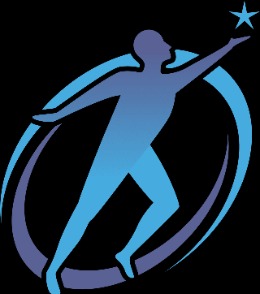You don’t need champagne budgets to serve a champagne brand experience. Slik får små bedrifter premium-utseende på budsjett is less about money and more about focus: consistent visual signals, confident copy, and a frictionless path to action. With a handful of sharp choices and a bias for clarity, you can raise perceived value, win more trust, and make your business look and feel premium—fast.
Make Your Small Business Look Premium on a Budget
Premium is a feeling buyers get in the first five seconds: order, confidence, and care. That feeling is built through three essentials—clarity (one idea per screen), consistency (repeat your rules everywhere), and contrast (space, hierarchy, and decisive color choices). Commit to a simple brand kit: two fonts (a clean sans + elegant serif), three colors (primary, accent, neutral), a spacing scale (4/8/16/32), and a photo style (crisp light, real people, minimal backgrounds). When every touchpoint obeys those rules, small instantly looks premium.
Use psychology like a pro. Status signals (quiet whitespace, restrained color, fewer words) say “we’re in control.” Authority cues (testimonials with names and logos, numbers not adjectives), scarcity (“Only 3 new projects/month”), and risk-reversal (clear guarantees, free audit) reduce doubt. Social proof works best when it’s specific: “Trusted by 127 Nordic SMEs” beats “Trusted by many.” Remember the five-second rule: if a stranger can’t tell what you do, for whom, and what to do next in five seconds, you’re leaking leads.
Spend where it shows. Rather than scattered upgrades, choose one hero asset to perfect—a high-converting landing page, your packaging, or your proposal template. Audit your top ten customer touchpoints and kill the bottom half; then double down on the top three. Lean on smart tools to close the gap: Google Fonts and variable type for luxury feel, free mockups for premium presentation, AI to punch up copy and A/B test headlines, and a tight content system of repeatable blocks. Premium isn’t more; it’s less, done with intent.
High-impact design hacks that cost almost nothing
Start with typography and spacing. Pair an elevated free combo like Playfair Display + Inter or Lora + Outfit; increase line-height to breathe; set generous margins; and let one idea dominate each screen. Upgrade visuals without a shoot by using consistent light, clean backgrounds, and mockups that match your color palette. Establish a brand “pose” for your voice—calm, precise, warm—and standardize microcopy (“Book free consult,” “No surprises. Fixed fee.”). To operationalize, fill your campaign card once and reuse it everywhere: Product/Service: [fill in]. Target audience: [fill in]. Platforms: [TikTok, Meta, Google, Email]. Style & tone: [e.g., professional, warm]. Campaign goal: [sales/leads]. USP: [proof-backed promise]. Specific requirements: [must-have message + CTA].
Turn that card into scroll-stopping creative using this mini-blueprint: Hook (pattern break), Identification (their felt problem), Solution (your simplest path), USP (why you), Emotion (life after), CTA (one, repeated). Example lines you can paste into ads: Hook: “Your website decides in 5 seconds.” Identification: “Clients hesitate when your brand looks cheaper than your work.” Solution: “We apply premium cues—type, space, proof—without premium cost.” USP: “A/B tested frameworks, GDPR-safe, Norwegian support.” Emotion: “Close with confidence; charge what you’re worth.” CTA: “Book a free audit now.” TikTok Boost (<7s): “Cheap brand? Not anymore.” Google Ads mini—Headline 1: “Premium look. Small budget.” Headline 2: “Make clients feel the upgrade.” Headline 3: “Stop losing leads in 5 sec.” Description 1: “Signal quality with clean design, sharp copy, and trust cues—without big spend.” Description 2: “Book a free 15-min audit. Get a premium checklist you can use today.” Email hook—Subject: “Your brand can look premium by Friday.” Preheader: “5-second fixes that raise perceived value and conversions—no big budget.”
Adapt messaging to minds, not just markets. Security-seeker: “Clear process, fixed price, zero surprises.” FOMO-driven: “Your rivals already upgraded—don’t be last.” Analyst: “2.3x higher CVR in A/B tests.” Socially motivated: “Looks you’ll be proud to share.” Variations: AIDA—Attention: “Your brand is judged in 5 seconds.” Interest: “Inconsistent design makes good work look cheap.” Desire: “Clients pay more when it looks worth more.” Action: “Book your free audit—only 3 slots monthly.” Humorous twist: “If your logo was a haircut, would you tip it?” Punchy 3-liner: “Look premium. Spend smart. Book your free audit.” Seal it with conversion tactics baked into your page: a bold top hook, always-visible CTA (“Book free consultation”), a two-choice menu (Services / Contact), trust badges (SSL, GDPR, Norwegian hosting), onboarding guarantee (“We move everything—no stress”), scarcity (“Only 3 projects/month”), and ROI proof (“One lost client costs 10× your site”). Tell one short case: “From template to premium—same product, 41% higher close rate.” Avoid cliches unless you twist them, never assume they care—make them care in the first line, and write like a person with a secret worth hearing.
Premium is a system, not a spend. Choose one hero touchpoint, codify your look, speak with proof, and make action effortless. Do that, and your small business will project the calm confidence of a premium brand—on a budget that respects reality.
